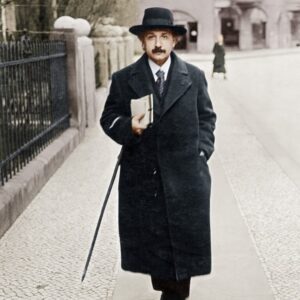Quantum for All
+ Literacy is defined as being able to read and write, or as having a deep understanding and competency in a specific subject. By extension, quantum literacy has traditionally meant the ability to read, write, and understand the language of the physical world, as cast in the highly abstract, mathematical, and counterintuitive formalism of wave functions and operators. Mastery of this vernacular is an essential skill for hardware developers and computer science purists. But as the laws of quantum physics play a greater role in modern technology, R&D managers, CEOs, and policy makers will need to become familiar with the major concepts of the theory—sans the mathematical acumen of being a card-carrying quantum mechanic. Quantum literacy thus needs to take on a broader meaning than proficiency in graduate-level physics.
Propelling the development of quantum technologies will require widespread literacy about quantum concepts, and a commitment to diversity as a source of competitive advantage.
+ Speaking the same language is a key step in propelling quantum technology into the next stages of development. It will require coordination between the different parts of the science and technology chain. For example, many quantum scientists are trained specialists who are asked to be a jack-of-all-trades because of their unique skills. These specialists often perform engineering tasks—setting up mechanical platforms, installing cryostats, or cajoling a laser system to produce an esoteric wavelength of light without flicker.
+ As the industry matures, these activities will be transferred to suppliers and manufacturers, who will provide increasingly fit-for-use equipment to researchers and quantum hardware developers. Just as the digital developer today needs no understanding of semiconductor theory to do her job, the quantum worker will become increasingly divorced and segmented from the details of quantum physics. This step is a natural one toward efficiency and is the hallmark of a maturing industry. Such a transition will also open up the field, allowing a broader scientific community to engage with quantum technologies.
+ Critically, we have a unique opportunity to extend the spirit of openness in another dimension, which is in the makeup of the quantum workforce. Voices that emanate from a multicultural, multigenerational, and mixed-gender workforce will help drive innovation. A diverse team promotes the freedom to think out of the box. It also unleashes powerful forces—assuming good ideas can rise to the top irrespective of their origins. Science has historically been a common language that transcends borders and cultural differences.
+ Incorporating inclusivity into the quantum ecosystem from the start will be essential for removing the geographical or cultural barriers that remain. Moreover, the history of much of American physics and engineering has been the history of the immigrant. The meritocracy of American universities will be squandered unless those building a quantum workforce vigorously pursue diversity in all its forms, including international cooperation.
Source: APS Physics. Irfan Siddiqi, Dario Gil, Joseph S. Broz, Quantum for All…
Content may have been edited for style and clarity. The “+” to the left of paragraphs or other statements indicates quoted material from “Source:” document. Boldface title is original title from “Source:” Italicized statements are directly quoted from “Source:” document. Image sources are indicated as applicable.

